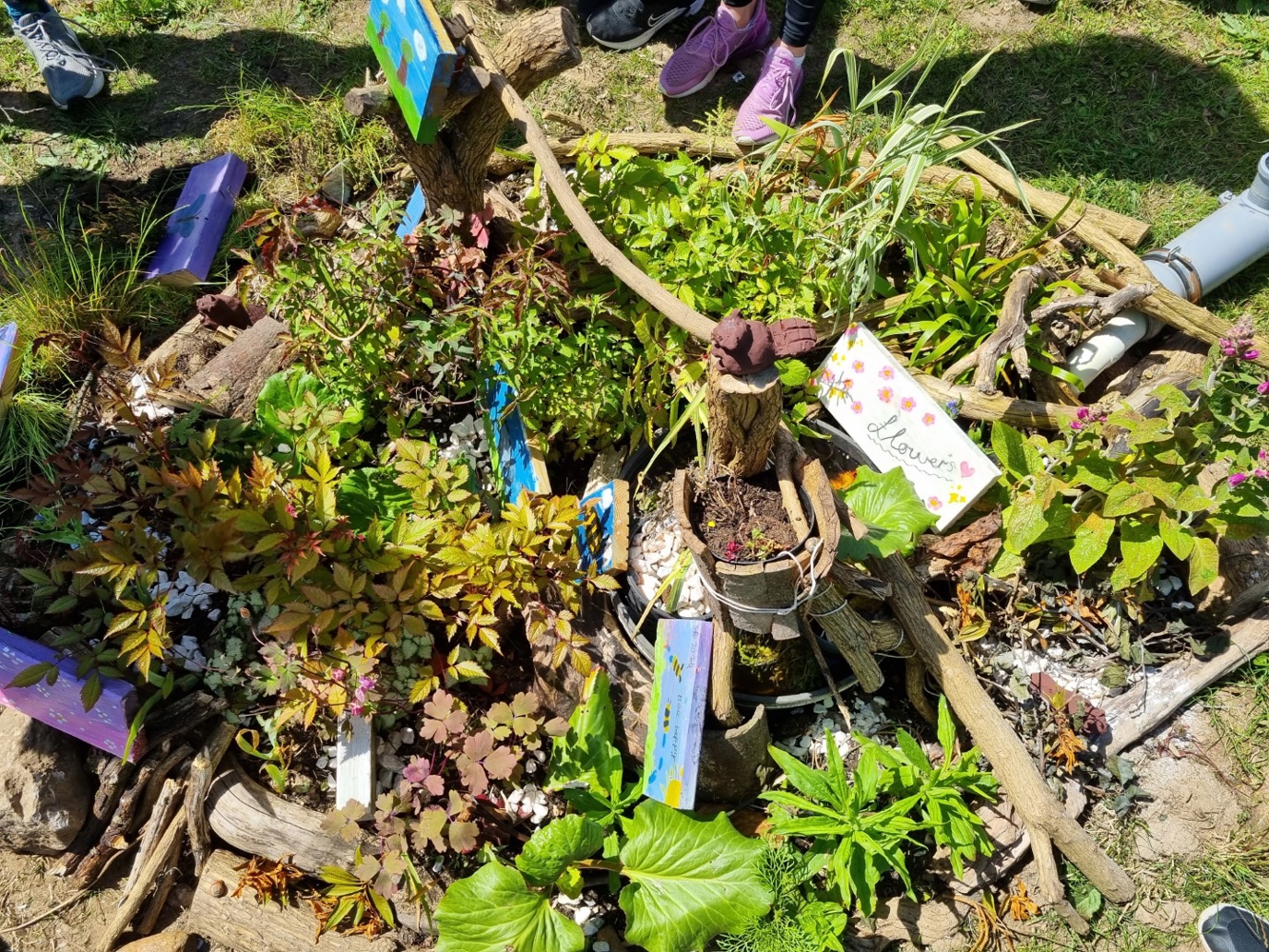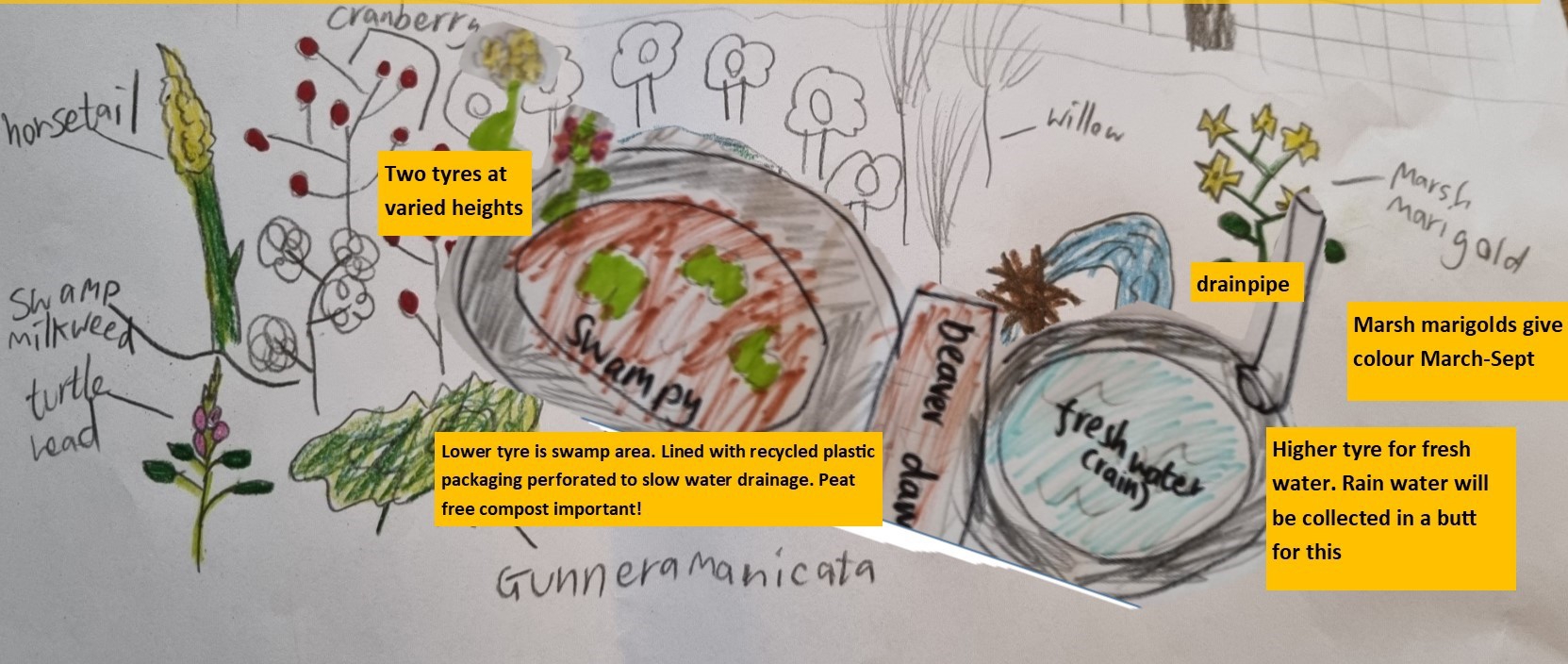Killermont Primary
Killermont Primary

P7A chose to enhance an area of our school grounds to promote biodiversity. There is an area of grass that is regularly waterlogged- the solution?- a BOG GARDEN! Our P7 pupils got hard to work researching the best plants to include as well as designing how the garden might look.
The Wild Wetlands Trust had inspiring videos to highlight how our communities can make a big difference to mitigating for climate change through drainpipe gardens as well as promoting biodiversity by the inclusion of a small container pond.
Once we knew there was a pond involved we looked at Nature’s Engineers and it was unanimous to include beavers and their incredible abilities to shape mini eco systems, into our design inspiration. Beaver lodges would be created from twigs and sticks, barks and pebbles…our local insects would love these! Plus, we are hopeful that amphibian friends might like our new water feature so they need places to shelter and hide.
Keep an eye out in the photos for our four cute little resident beavers that our classmates made from clay.
The digging began. In high spirits and full singing voice, P7s dug a hole together. It was hard work to get through the compacted soil. We picked out big stones and rubble and washed them up to look nice at the edges of our feature as well as provide stepping stones for visiting creatures to get in and out of the pond – a must have if you do become inspired to add a little container pond to your own garden.
At a local industrial site, they had waste of thick plastic tarpaulin and big sections of pipes. We did not want to see this thrown away and reused the tarpaulin as a liner for our bog garden. We pierced some holes so that it would not permanently hold water but it would be slow draining, before the singing began again and the soil was returned to the hole, adding some organic matter and peat free compost.
We had a lot of rain that night and at playtime the next day, we were delighted to see our first, inquisitive visitors. Two ducks were investigating this new area!
We hadn’t even added our pond (but we were busy collecting up the precious rain water to fill our pond in coming days). Our bog garden has given us a new appreciation for rainy, rainy days as we know our garden will be pleased!
A tour of this bog garden from pupils, with how and why they made it
Planting up!
We wrote letters to our local garden centres and got the message out to parents/carers and neighbours about the help we needed in sourcing plants. We had some fabulous donations as people were busy tidying up their gardens for Spring. A fallen, uprooted buddleia was cut into sections and with its natural twists and curves, became the outer edge of our garden as well as being used to build some height and provide yet another access point to our little pond. We love the look of this wood and hope the insects enjoy it as it rots away over coming years.
A huge, pruned grass was donated. We planted it next to our pocket garden as many creatures will love hiding away within its cover as it regrows. Our iris is not the yellow flag iris we had planned for but we have bog area seeds that will hopefully come on for next year that include these. We kept these iris rhizomes towards the edge of our garden as they may not love the boggy conditions just as much as the yellow flag iris will. The leaves look lovely sticking up through planting but sadly no flowering as yet…fingers crossed for next year. Our little cuttings of ground covering plants like astilbe have really loved the conditions and have established very well.
Finally, we added our artistic touches by painting some of the reused decking blocks from our industrial waste pick up. We painted and varnished these to let them last a bit longer.
The idea is that now other classes can add other little pocket gardens around the area and together we can make a beautiful area that benefits wildlife. As we move up to high school after the summer, P7A are over the moon to be able to leave our little Pocket Garden oasis for the benefit of our community and our local eco-system.


